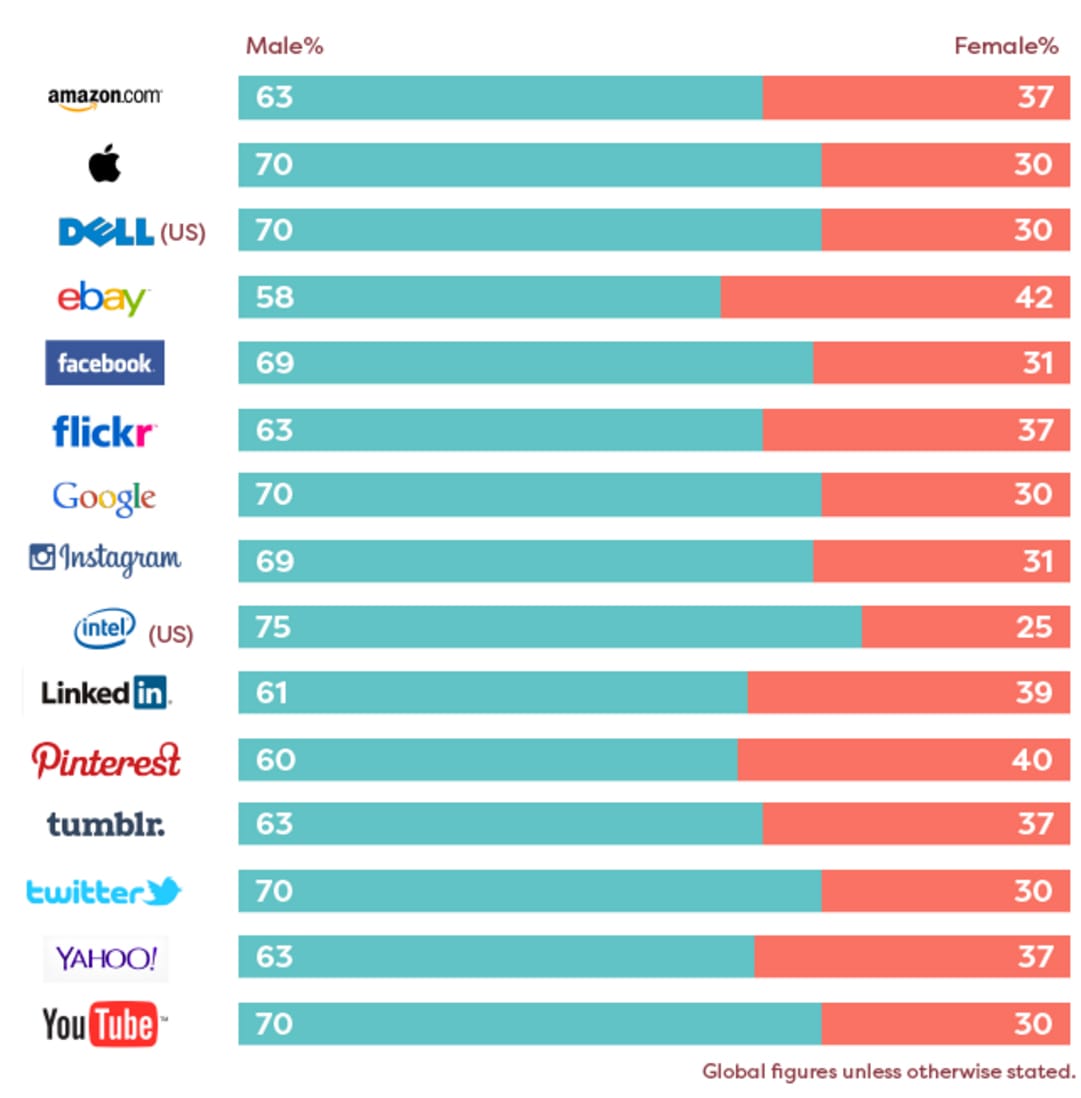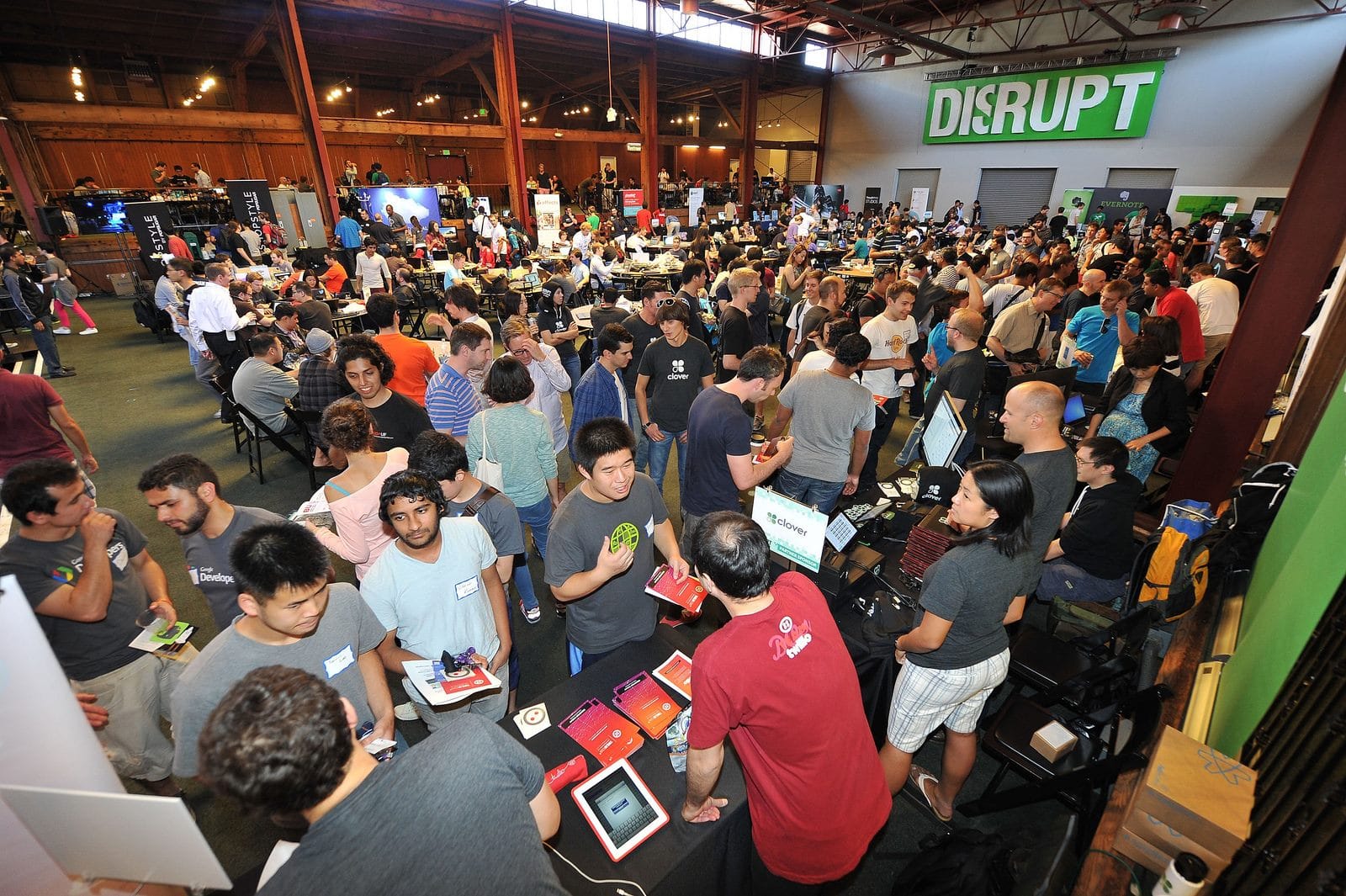In explaining the tech industry’s yawning abyss of a gender gap – by one count, women represent just 12 percent of engineers at major tech companies – a study published last year speaks volumes. The study gathered responses from over a million computer programmers, and found that the work of female coders was consistently ranked better than males.

However, respondents only ranked women’s work as superior when they didn’t know the coders’ sex. When they did, their work was judged more harshly.
The most common explanation given for tech’s gender gap is the “pipeline” argument, which holds that there aren’t enough women graduating college with industry-ready qualifications, particularly in computer science.

But deeper, cultural problems underlie that fact. These are the same problems causing women to leave the industry en masse. A 2008 study from Harvard Business Review found as many as half of the women working STEM jobs want to leave eventually. Fortune magazine surveyed 716 women who had left the industry in 2014. Only 3 percent said they’d really like to return to it.
In performance reviews of 248 high-ranking individuals in tech, negative personality assessments (“strident,” “irrational”) came up in 85 percent of reviews for women, and 2 percent for men.
According to Kristen Hamilton, CEO of Seattle-based career training company Koru, tech is infected by a culture that’s awkward for women, and at times toxic. But that hasn’t always been the case. Hamilton has been in the scene since the early ’90s. Back then, it didn’t matter as much if you were a man or woman. “It was more of a fringe thing” that skewed male, she says, but not quite so aggressively.

“Those were the wild days where no one understood the framework of what was possible, and everyone was a crazy person to be building a company anyway,” Hamilton says. “Flash forward, and my perspective is there’s a lot more rules, more assumptions… There’s often a culture, and a language, and an ethos that is very ‘Cool dude.’ I think it’s been a turnoff to women, especially technical women.”
As tech morphed into something more mainstream and lucrative, it became more of a boy’s club, with the percentage of women in computing jobs dropping 10 points between 1990 and 2013. In short, it became the sort of space where two guys could create a app called Titstare and be invited to pitch it at a TechCrunch industry conference before a large, often receptive audience.
It’s also become an industry full of guys who are uncomfortable with female interaction. Part of that is personal. But on a professional level, there’s also a frequently unspoken feeling that having a woman around sets up landmines, where men can’t be as open in communication. Or as Whitney Hills, a longtime programmer in the gaming industry, put it:
Sometimes you don’t feel lonely or like a novelty, like when you’re sitting around the lunch table, cracking jokes with your coworkers. You feel happy and included. But when one of your coworkers makes a joke that is crude, even though it doesn’t offend you at all and you haven’t even had time to laugh, he turns to you and apologizes, because you are the only woman at the table and your delicate sensibilities must have been affronted. You feel lonely again. You feel like you’re not supposed to be at the table.
This isn’t widely talked about. Nor is the assumption by some men in the industry that women aren’t as open to the cold logic and criticism common to technical professions. As mainstream a voice as Larry Summers, then-president of Harvard University, suggested this out loud at one point.
That’s part of why venture capitalists are less likely to take a pitch from a woman than a man. It’s also part of the reason that in University of Washington biology classes, male students have been shown to undervaluethe intelligence of female students.
It’s easy to lump men in tech together. They do, after all, often look remarkably similar. But many men in the industry recognize these problems. They support more inclusive STEM education, they mentor, and they support the career advancement of women when it’s deserved. As coder Ciara Byrne wrote in Fast Company:
Many of the problems I encountered in my tech career were due to the cluelessness of my teammates rather than any malice on their part. There was malice too – the boss who told colleagues that I was “too smart for my own good” and never gave me credit for my work, the subordinate who did everything possible to undermine my authority because he hated working for a woman, the team who would go to the pub together and never invite me – and that was hard to deal with. But mostly I worked with decent guys who were just happily being themselves.
But there’s a common belief that the gender gap is a slow but steady fix, as women continue to make strides in STEM education and fill the ranks. If the industry’s culture provokes them to leave within years, that’s not a complete strategy.
Putting aside the idea of equity, there are selfish reasons to start addressing tech’s cultural issues more directly and openly. The industry has a number of important challenges to tackle in coming years and decades, and is built on ingenuity. If your team is a bunch of white guys from similar backgrounds, your ideas lack variety and perspective as much as your staff does. A lot of great concepts and creativity go unrealized.

Years ago, reflecting on President Barack Obama’s election, comedian Chris Rock said:
To say that black people have made progress would be to say they deserve what happened to them before. So, to say Obama is progress is saying that he’s the first black person that is qualified to be president. That’s not black progress. That’s white progress. There’s been black people qualified to be president for hundreds of years.
When tech leaders say the gender gap must be solved by having more women enter the field in college, they are in effect putting the impetus on women to solve the problem. But the fact is that the tech world makes women feel unwelcome or undervalued constantly. When it stops, there’ll be more of them working in it. It’s up to the men who currently run the industry, and largely populate its ranks, to make that change happen.
---
Throughout the month, Crosscut will be showcasing the perspectives and experiences of women in the region’s innovation economy, and analysis of the persistent gender gaps within the tech industry. To submit stories and tips, please write editor@crosscut.com.
---
Photo credits:
Lead image: TechCrunch Disrupt NY 2013 Hackathon
Infographic: NextGeneration
Kristen Hamilton: Koru
San Francisco hackathon: TechCrunch
---
This series made possible with support from the Washington Technology Industry Association. The views and opinions expressed in articles are those solely of the author and those quoted.


